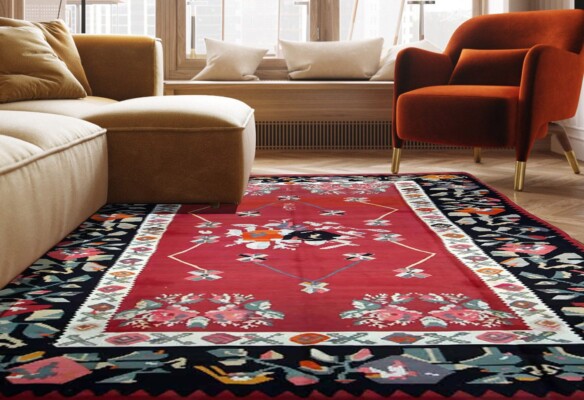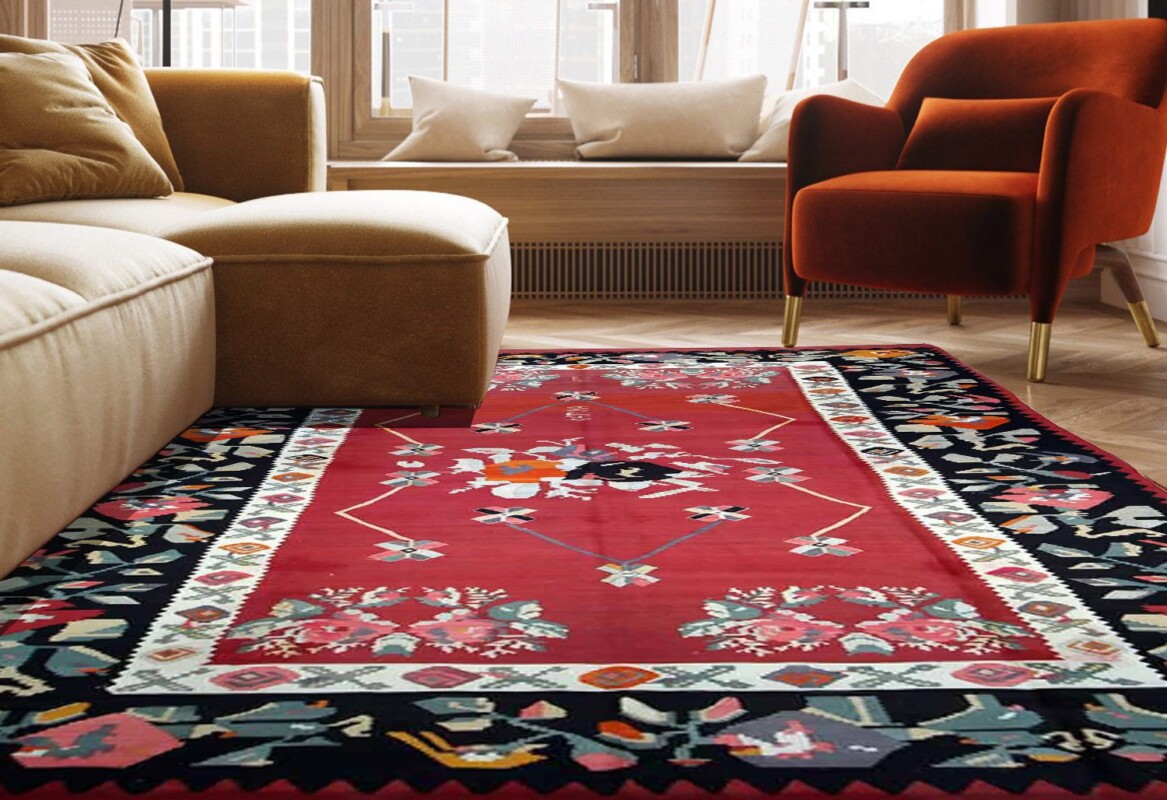Uncategorized
Kilim, all you need to know
Kilim, all you need to know

Kilim is a woven craft that despite carpets, it does not have pile. Kilim is woven with warp in cotton or wool, and weft in wool. Kilims are usually a craft from rural zones with the use of materials coming from that area. Kilims have many functions besides covering the floor as a carpet. Bags, saddles, clothes, and even containers are some crafts made with Kilim. Weaving Kilims is common in the zones like central Asia, east of Europe, and north of Africa, where fostering livestock is popular. From Caucasus and Turkey to Iran, Afghanistan, and India, weaving Kilim is a source of income for rural people.
Kilim considered an artisan object used as a floor cover, walls, to heat environment by the tribes who live between the hill and the plain. Kilims are made with goat hair, sheep wool, cotton, and rarely silk. The weft is usually with the animals’ hair or wool. In the fine Kilims it is possible to see also Kork wool to bring more delicate feeling to the final product. Warp of Kilims is usually with cotton, but it is also common to see wool as warp for some Kilims. Kilim as a traditional craft is for covering the floor, but nowadays it is used as a modern coverage in the houses as carpets, sofas, cushion, and tableau.
The dyeing process of the materials for weaving Kilims is manual with natural colors. For dyeing the materials, mineral colors and vegetal colors are used to give variety of options to the product. Sometimes for giving more natural look, the wool and the hair are not going to be dyed to keep the natural brown/beige color as the base of the Kilim.
Kilims from Iran are known under many names depend on the location of the production. The most important Persian Kilims are Beluch, Seneh, Turkmen, Qashgai, and Afshar. Beluch kilims are usually striped with colors such as brown, dark red, dark blue, beige, yellow, and green. Seneh kilims are usually with fine design with variety of colors. Turkmen kilims are light and strong with contrasting colors such as red, yellow, green, and orange. Qashgai kilims are with sharp colors and sometimes contrasted, and the designs are usually geometric. Afshar kilims are using natural colors of the materials with the designs transformed to the shape of stars.
Afghanistan kilims are consider as an income for many families in Afghanistan. Kilims from Afghanistan are usually known as Kaudani. The designs of these Kilims are containing a repetitive motif in shape of lozenge or stripes. The colors used for Afghanistan kilms in the past were limited but nowadays the weavers are using sharp colors with harmony to give the kilims a modern taste. Today, the Kaudani kilims are famous in Europe and many companies are importing these kilims since they meet the taste of the market.



